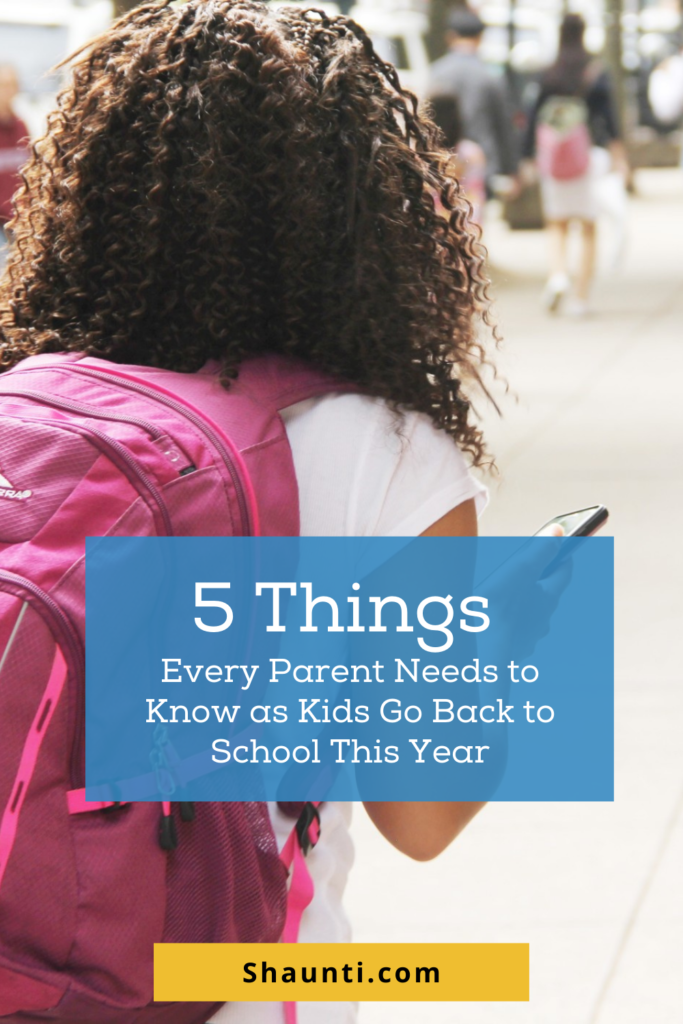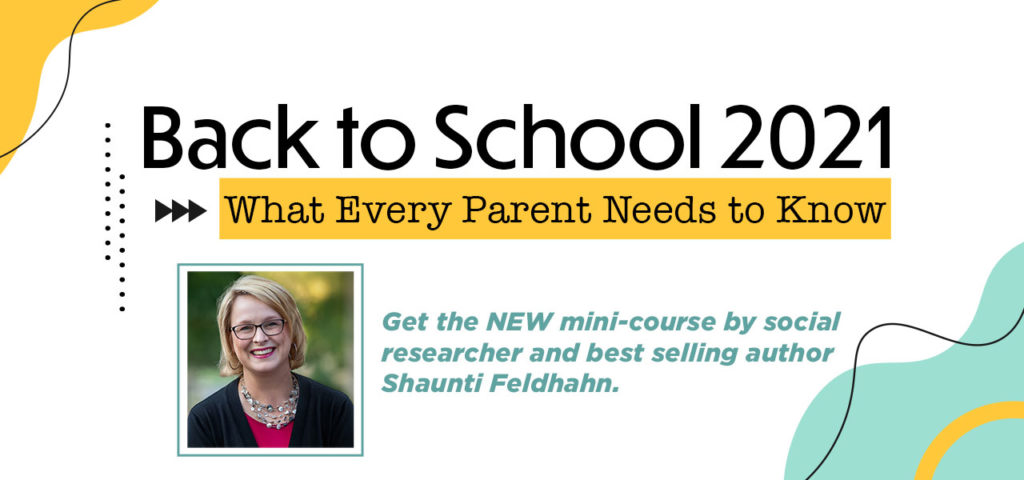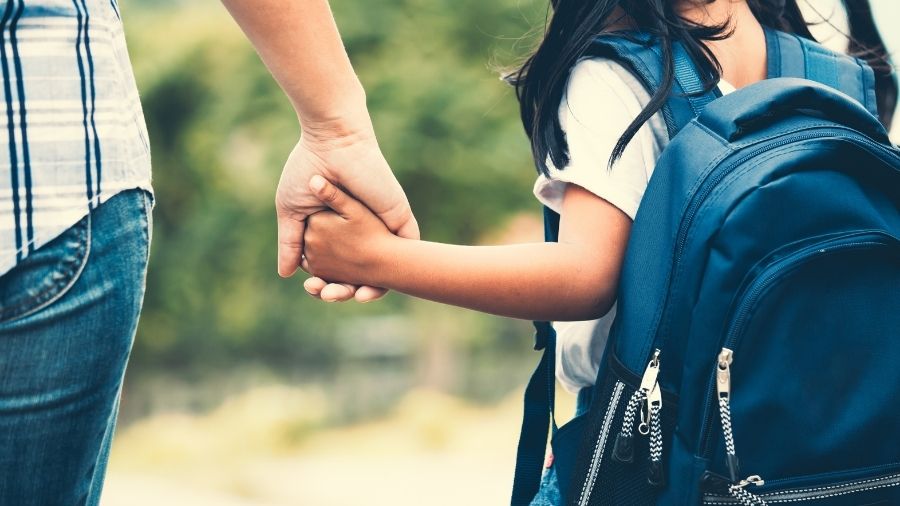5 Things Every Parent Needs to Know as Kids Go Back to School This Year
“Back to school” means something very different this year. After 18 months of disruption, most school districts are trying to get kids back to in-person learning in the classroom. Back to some semblance of normal. And yet . . . it is “normal” for us, not our kids. For them, one and a half years is a lifetime, developmentally. “Normal” has moved on.
For example, my son is a rising senior who is deep in the process of ACT studying and college applications. Starting this week, he will be back with people he has seen only on a video screen since he was a sophomore—before any of them could drive. During a time when the most long-term thought they had was whether the Track team would make the championships. (Answer: no. The championships were all cancelled.)
Now, for him, thankfully the transition won’t be as jarring since his school offered both virtual and in-person learning. So the ratio of students he hasn’t physically seen in 18 months is low. But for many students around the country, the number is 100%.
And think about how developmentally different things are for our younger kids. For many middle schoolers, the last time they were in school they still had to walk in a line with a homeroom teacher and were in a social situation where everyone was relatively accepting of one another. How times will have changed.
Even crazier, our youngest kids will be back in a classroom environment they barely remember—or have no memory of at all.
Bottom line: in this back-to-school season, there are a lot of anxieties—and a lot of opportunities. As I ponder the research we’ve done with 3,000+ kids over the years, our ongoing interviews with kids today, and the other studies out there, here are five vitally important things to know.

- There is a lot going on in our kids’ minds and hearts—and now more than ever it is essential to understand it.
“Getting inside the head of your kid” is the subtitle of our book For Parents Only, and now more than ever it is crucial to try to do exactly that.
A few days ago, I did a virtual parenting event for a church in New York City, where most kids have had zero in-person classroom learning since March 13, 2020. I explained that I am not a normal parenting expert who can help them understand top-down parenting techniques such as how to handle social media violations or establish dating rules. Instead, my narrow goal was to help these parents come alongside their kids during an incredibly tumultuous time. To see some of the hidden worries and hopes in their hearts, and use this time as an opportunity to speak to those and walk with them.
That’s my goal for us here, too. Because the truth is: there is a lot going on under the surface in our kids right now. And we have to be predisposed to go looking for it, since we may not see it otherwise.
Which leads to the second thing we need to know.
2. Our kids are facing an unprecedented level of anxiety.
The entire population has had an unprecedented spike in mental and emotional health issues—and the situation is most acute for kids. The ratio of adults with anxiety and other issues jumped from 11% in 2019 to 41% today.
But for our kids, the numbers started higher—and ended higher.
We don’t yet have a good apples-to-apples comparison, but as a rough overview, in 2019 22% of kids had clinically-significant anxiety or other mental/emotional health issues. Today, according to a survey of parents, the ratio is 59%.
The top issues for kids ages 2-18 were social isolation/loneliness, anxiety, trouble concentrating, and difficulty handling emotions. And those issues, among many others, are only those that are visible; those numbers don’t even include the hidden worries and fears in a child’s heart that aren’t visible on the surface.
Now, almost certainly, some of the parents’ concerns (some of that 59% number) likely wouldn’t rise to the level of a clinical diagnosis. But just as certainly, many parents probably aren’t noticing some things that a clinician would see. So it is quite likely that 6 in 10 kids are indeed going into this school year with one or more of these issues.
We as parents must be looking under the surface in our kids. Both so they know they are not alone, and so we can help them navigate the uniquely choppy waters of this time.
3. This particular back to school season is going to be a catalyst—for both challenges and opportunities.
In our research for For Parents Only we identified several often-hidden patterns inside our kids that are essential for parents to understand. And even during a normal year, the back-to-school season increases the intensity of these patterns.
This is not a normal year. Those patterns are likely to take some parents by surprise. But they don’t have to. And they don’t have to be problems, either—this time is just as likely to present opportunities! Opportunities for your child to grow into a strong young person and build character and resilience. And opportunities for you to build a greater connection with them.
Although we don’t have the space to identify all the ways this may play out, here are just two. (Get access to the virtual event I did with the NYC church for more detail!)
4. Freedom will be even more intoxicating—and there is a lot of pent-up demand for it.
Despite the overall anxiety level, most kids are eager for the opportunity to be back in a familiar environment, with a wider circle of friends and classmates, doing activities and sports, and learning in person. The older kids are also—let’s just say it—eager to get back a sense of distance from their parents. Even if they love their parents, our research found that kids love freedom too.
In fact, “love” isn’t really the right word. They are driven by it. As one adolescent psychotherapist told us, “Freedom is [like a drug] to a teenager. It’s intoxicating. It’s addictive. And it’s often their biggest motivator. They will do anything to get it, and they are terrified of losing it.”
The quest to be their own person and do what they want to do out from under the eyes of Mom and Dad is already one of the biggest motivators from the tween years until high school graduation. (That’s when they actually achieve that glorious freedom—and discover they aren’t quite as ready for it as they thought. But that’s a different topic!)
But given the restrictiveness of the last year and a half, I suspect there is even more demand for freedom today. And since kids’ brains aren’t fully developed yet, that could lead to some really foolish decisions. (“Really?! You truly thought no-one would mind if you hijacked the athletic director’s golf cart and sped down to the convenience store for sodas?”)
Even more than a normal year, we need to be watchful. But we alsoneed to be praying for wisdom about what is simply pent-up freedom foolishness, and what is a pent-up rebellious-heart issue that is being unleashed. Those need to be handled very differently. And if you can use this as an opportunity to come alongside your child, listen, and empathize with their desire for freedom (while still having necessary boundaries), you can learn a lot about what matters to the person your child is becoming.
Which leads to the last item on our list for the day.
5. Learning what “listening” means to your child is even more important.
We all want to listen to our kids. But during this back-to-school season, here’s a primer on what listening means to them.
It does not mean “listen to my problem.” It means “listen to my feelings about the problem.”
That does not come naturally to most parents. But the survey numbers were stark. Three out of four kids want to be able to share what is going on with their parents (“I can’t believe the coach isn’t playing me after all the work I did to get ready!”) but 81% want their parents’ first step to be purely listening to feelings (“I’m so sorry! What do the other players think? Tell me what your friends said. It sounds like you’re feeling a bit blindsided.)
After your child feels “heard” you can move to the second step of offering ideas and help if they want that. But for eight in ten kids (girls and boys!) they most want you to listen to how they are feeling about the problem. And we’ve seen that this “Step One” matters to even our youngest kids.
This year, as they go back to school, there will surely be a lot of stirred-up emotions. Both ones of positivity and excitement (being back with friends, having more breathing room) and ones of anxiety and stress (worries about how they will do, shutting down again, navigating a new social order). Let’s show our kids how much we value knowing what is going on in their hearts and minds, and by doing so build a connection that lasts long after this very unusual season.

Want to know more about how to come alongside your kids during this unique back to school season? Get access to Shaunti’s virtual August 2021 event on what every parent needs to know.
If you are interested in having Shaunti bring research-based strategies, practical wisdom and biblical principles to your next event, please contact Nicole Owens at [email protected].
Transform Your Relationships with Kindness! Join the 30-Day Kindness Challenge and Embrace the Power of Positivity. Watch as Kindness Strengthens Your Connections and Creates Lasting Bonds.
Please note: This post may contain affiliate links. As an Amazon Associate we earn a small amount from qualifying purchases through these affiliate links. This doesn’t cost you anything, and helps us continue bringing you great content!







